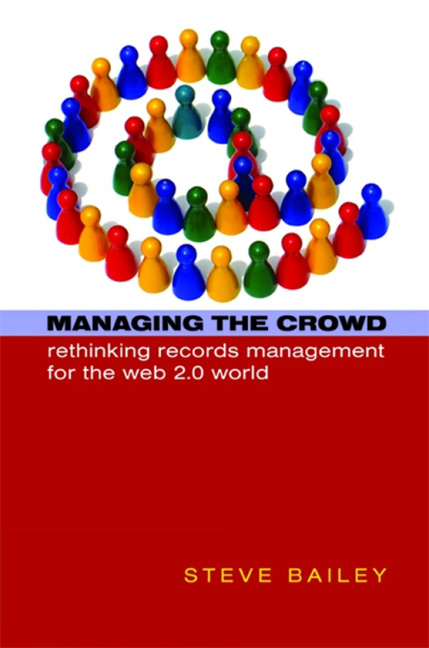Book contents
- Frontmatter
- Dedication
- Contents
- Foreword
- Preface
- Part 1 The Nature Of The Changing World
- 1 The big picture: Web 2.0 and current trends in IT
- 2 The reality check: surely change is endemic in IT?
- 3 Web 2.0 and Office 2.0: enter the third paradigm
- 4 Welcome to the world of Office 2.0
- Part 2 Is records management no longer fit for purpose?
- Part 3 Records Management.0 And The Future Of Records Management 121
- Index
3 - Web 2.0 and Office 2.0: enter the third paradigm
from Part 1 - The Nature Of The Changing World
Published online by Cambridge University Press: 08 June 2018
- Frontmatter
- Dedication
- Contents
- Foreword
- Preface
- Part 1 The Nature Of The Changing World
- 1 The big picture: Web 2.0 and current trends in IT
- 2 The reality check: surely change is endemic in IT?
- 3 Web 2.0 and Office 2.0: enter the third paradigm
- 4 Welcome to the world of Office 2.0
- Part 2 Is records management no longer fit for purpose?
- Part 3 Records Management.0 And The Future Of Records Management 121
- Index
Summary
Questions addressed in this chapter
• Who owns a blog: the author, or their organization?
• Can we manage a wiki as a corporate resource?
• Why are collaborative editing tools different from traditional Office applications?
• Why are users happy to ‘tag’ for themselves in social software applications, but resist adding ‘metadata’ within corporate systems?
After a brief sojourn in the recent IT and information-creating past, it is time to return to a consideration of the present and a projection into the future. So far, our overview of the essential nature of the new Web 2.0 era has dwelt largely upon what are currently its two most obvious expressions: social networking systems and media sharing services. Some of the effects these technologies may have on the way information is created and manipulated have already been touched upon, particularly the volume of data created, the potential for repurposing and reuse and the erosion of the traditional barriers between work and home. These in themselves should all be enough to excite the interest of the records manager, but as mentioned back in Chapter 1, these represent only two of the seven identified types of Web 2.0 service or application; so what of the other five?
At this point it is perhaps worth reminding ourselves of the full list of Web 2.0 service types, which includes:
1 Blogs
2 Wikis
3 Social bookmarking
4 Media-sharing services
5 Social networking systems
6 Collaborative editing tools
7 Syndication and notification technologies
In terms of their potential impact on the way in which our organizations create information it is appropriate to leave consideration of social bookmarking and syndication and notification technologies to one side for the moment, as both are more concerned with the selection and management of information rather than its creation. Though, as we shall see, it is these tools which offer significant potential for the records manager when seeking to extend their influence to this domain, and their role as such will form an important element of later chapters.
Blogs
The web log, or blog, is another of the most visible expressions of Web 2.0. The Technorati Blog aggregation service suggests there are currently somewhere in excess of 100 million blogs in existence.
- Type
- Chapter
- Information
- Managing the CrowdRethinking records management for the Web 2.0 world, pp. 25 - 38Publisher: FacetPrint publication year: 2008



